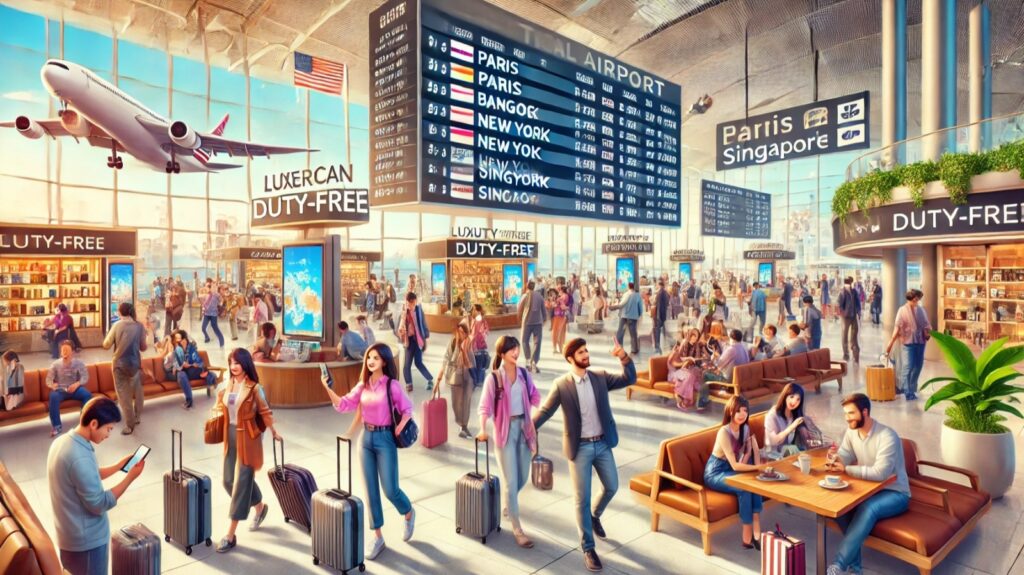Travel has long been a symbol of economic prosperity, cultural curiosity, and global influence. The ability of a nation’s citizens to explore the world reflects not just personal wealth but also the country’s connectivity, diplomatic relations, and the strength of its travel industry. In today’s globalized world, international tourism has become a major economic driver, supporting millions of jobs and influencing local economies worldwide.
Among the leading travelers, two of the world’s largest economies—the United States and China—stand out as dominant forces in international tourism. Both countries have millions of passport holders who venture abroad each year, whether for business, leisure, or education. However, when it comes to sheer numbers, destinations, and overall spending, their travel habits reveal fascinating differences.
Who travels more? Who spends more? And which destinations benefit the most from these massive tourist flows? Let’s break down the latest statistics and trends that shape global travel and see how these two economic powerhouses compare.
Who Travels More?
When comparing travel volume, China has historically led the world in outbound tourism.
- In 2019, Chinese travelers made 155 million outbound trips, making them the single largest group of international tourists.
- In comparison, U.S. travelers made 99.7 million outbound trips that same year.
This means that before 2020, mainland Chinese citizens were traveling about 55% more than Americans when going abroad.
However, American travelers still make up a massive share of global tourism. The U.S. has one of the highest passport ownership rates in the world, with nearly 160 million valid U.S. passports in circulation as of 2023—around 48% of the population.
By contrast, China has a much lower passport ownership rate, estimated at 12% of the population in 2018. This suggests that while a large number of Chinese travelers go abroad, it is still a relatively small percentage of the overall population compared to Americans.
Who Spends More?
While travel volume is important, spending is what truly drives global tourism. In this area, Chinese travelers have long dominated the international market.
- Chinese tourists spent $255 billion on international travel in 2019, more than any other nationality.
- American tourists, in comparison, spent around $186 billion internationally in 2019.
This means that, on average, Chinese travelers spent significantly more per trip than their American counterparts. A large portion of this spending went to luxury goods, shopping, and high-end travel experiences.
By 2023, American travelers had increased their overseas spending to $215.4 billion, reaching 17% above 2019 levels. However, Chinese tourists are projected to spend around $260 billion in 2024, keeping them at the top of global tourism spending.
Where Do They Travel?
The destinations of American and Chinese travelers reflect their geographical positions and cultural preferences.
American Travelers
Most Americans travel within the Western Hemisphere, often visiting nearby countries:
- Mexico: The top destination for U.S. travelers, with over 33 million visits annually before 2020.
- Canada: Another major destination, with 15 million annual visits by Americans.
- Europe: A major attraction, especially destinations like France, Italy, the UK, and Spain.
- The Caribbean: Countries such as the Dominican Republic, the Bahamas, and Jamaica are popular vacation spots.
Many American travelers favor beach vacations, cruises, and adventure tourism, with a large percentage traveling for leisure. Business travel also plays a key role, as American corporations operate on a global scale.
Chinese Travelers
Chinese tourists often travel within Asia but also visit Western countries in growing numbers:
- Thailand: One of the most popular destinations, with over 11 million Chinese visitors annually before 2020.
- Japan and South Korea: Both countries attract millions of Chinese tourists each year, thanks to their proximity and shopping opportunities.
- Malaysia: A key destination for Chinese travelers, with over 3 million Chinese tourists visiting annually. Malaysia benefits from its affordable luxury, cultural ties, and visa-free policies for Chinese citizens.
- Singapore: A top destination for wealthy Chinese tourists, drawing over 3.6 million Chinese visitors in 2019. Singapore’s reputation as a financial hub, luxury shopping paradise, and gateway to Southeast Asia makes it highly attractive.
- Europe: France, Italy, and the UK are among the top European destinations for Chinese travelers. Paris, in particular, is famous for its luxury shopping appeal.
- The U.S.: While Chinese tourists visit the U.S. less frequently than Americans visit China, major cities like New York, Los Angeles, and San Francisco are hotspots.
Shopping is a huge motivator for Chinese travelers, with many favoring high-end brands such as Louis Vuitton, Chanel, and Gucci. This is why duty-free malls in places like Hong Kong, Singapore, Japan, and South Korea cater heavily to Chinese tourists.
Differences in Travel Behavior
While both groups travel frequently, there are some key differences:
- Americans take shorter international trips (often under two weeks), while Chinese tourists are more likely to take extended vacations.
- Chinese travelers spend more on luxury goods, while Americans tend to spend more on experiences such as dining and entertainment.
- Group travel is more common among Chinese tourists, while Americans are more likely to travel independently or with family.
The Future of Global Travel
As global travel continues to grow, both American and Chinese travelers will remain key drivers of the tourism industry. While the U.S. leads in the number of passport holders and total travel spending is increasing, China still holds the edge in sheer numbers of outbound travelers and total spending.
With an estimated 160 million outbound trips expected from China in 2024, their impact on international tourism will continue to grow. Meanwhile, Americans remain strong travelers, with spending reaching all-time highs.
In the end, whether it’s an American sunbathing in Cancun or a Chinese tourist shopping in Paris, both groups are reshaping the travel industry in their own ways.
